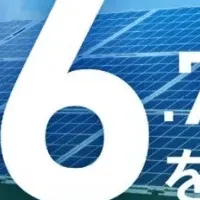
LONGi Unveils HIBC Technology and True 700W Module at SNEC2025
LONGi Unveils HIBC Technology and True 700W Module at SNEC2025
At the recently concluded 18th International Solar Photovoltaic Exhibition (SNEC2025) held on June 11, 2025, LONGi made headlines with the official introduction of its innovative Hybrid Interdigitated Back-Contact (HIBC) technology. This advancement is noteworthy as it enables the mass production of solar modules exceeding 700 watts, all while maintaining a standard size of 2,382 mm × 1,134 mm. Moreover, the efficiency of these modules approaches 26%, marking a significant leap forward in photovoltaic technology, particularly in the era of modules boasting efficiencies above 25%.
The Impact of HIBC
LONGi’s HIBC technology, which integrates features of both Heterojunction Technology (HJT) and traditional back-contact technology, represents a first in the industry. Zhong Baoshen, the President of LONGi, announced that this innovation not only sets a new benchmark for technological achievements in solar energy but also highlights the company's commitment to advancing solar efficiency. The world has observed a dramatic rise in solar module performance, with HIBC cells recently achieving a record conversion efficiency of 27.81%—an accolade confirmed by the Institute for Solar Energy Research Hamelin (ISFH) in Germany.
Zhong emphasized that improving power output per unit area—or unit efficiency—is crucial. He expressed skepticism about merely increasing efficiency through physical stacking or enlarging module size. Such approaches can introduce reliability and quality concerns as surface areas expand. Despite the success of LONGi's HPBC 2.0 products, featuring standard-size 72-cell modules, the company remains relentless in pursuing technological innovation and research in product development.
Power Density Breakthrough
One of the remarkable features of the newly unveiled HIBC module is its power density; it achieves 259 watts per square meter. This achievement ensures that LONGi's True 700W module stands as the most efficient industrial photovoltaic product currently available. Compared to other 700W modules in the market, which typically measure 2,384 mm × 1,303 mm, the HIBC module boasts a reduced surface area while providing 34 watts per square meter more power density, disrupting the previous notion that larger sizes correlate to higher output.
This advance is indicative of LONGi's pioneering role in promoting the concept of 'power density' within the industry, further illustrating its commitment to harnessing technological advancements while ensuring high-quality standards that directly benefit customers. The HIBC module is anticipated to serve as a more practical option, especially as land for solar installations becomes scarcer and rooftops become increasingly viable.
Bridging Technology and Production
The HIBC technology not only enhances the production efficiency of photovoltaic modules but also supports the industry's transition into an era of products exceeding 25% efficiency. The HIBC technology has dual benefits: it maintains a high-quality passivation layer conducive to optimal performance while enhancing reliability.
Previously, modules with efficiencies above 22% relied on PERC technology, and the advent of TOPCon technology further pushed efficiencies to over 23%. The introduction of HIBC technology is poised to elevate the industry standard even further, seamlessly combining high technology with high production capabilities.
Moreover, Zhong noted that achieving such results took less than three years—a testament to the substantial potential of BC technology and its capacity for continued efficiency improvements. This commitment to technological evolution does not go unnoticed in academic circles; esteemed solar energy expert Professor Martin Green from the University of New South Wales highlighted LONGi's leadership in advancing BC technology during the SNEC conference.
A Vision for the Future
During the press conference, Zhong also detailed LONGi's efforts since launching the BC ecosystem in 2023. By May 2025, the company engaged with 191 global partners, establishing 55 collaborations encompassing key sectors such as silicon wafers, cells, modules, system solutions, hydrogen energy, biomass, and engineering technology. This strategic development garnered a preliminary revenue of 1.95 billion yuan.
In conclusion, LONGi's ambitious vision for the future of solar technology hinges on enhancing and scaling the potential of BC technology to penetrate various industries and households. As Zhong stated, their commitment continues to focus on 'starting with the end in mind,' ensuring that the photovoltaic industry grows sustainably and healthily for years to come.
Topics Energy)










【About Using Articles】
You can freely use the title and article content by linking to the page where the article is posted.
※ Images cannot be used.
【About Links】
Links are free to use.